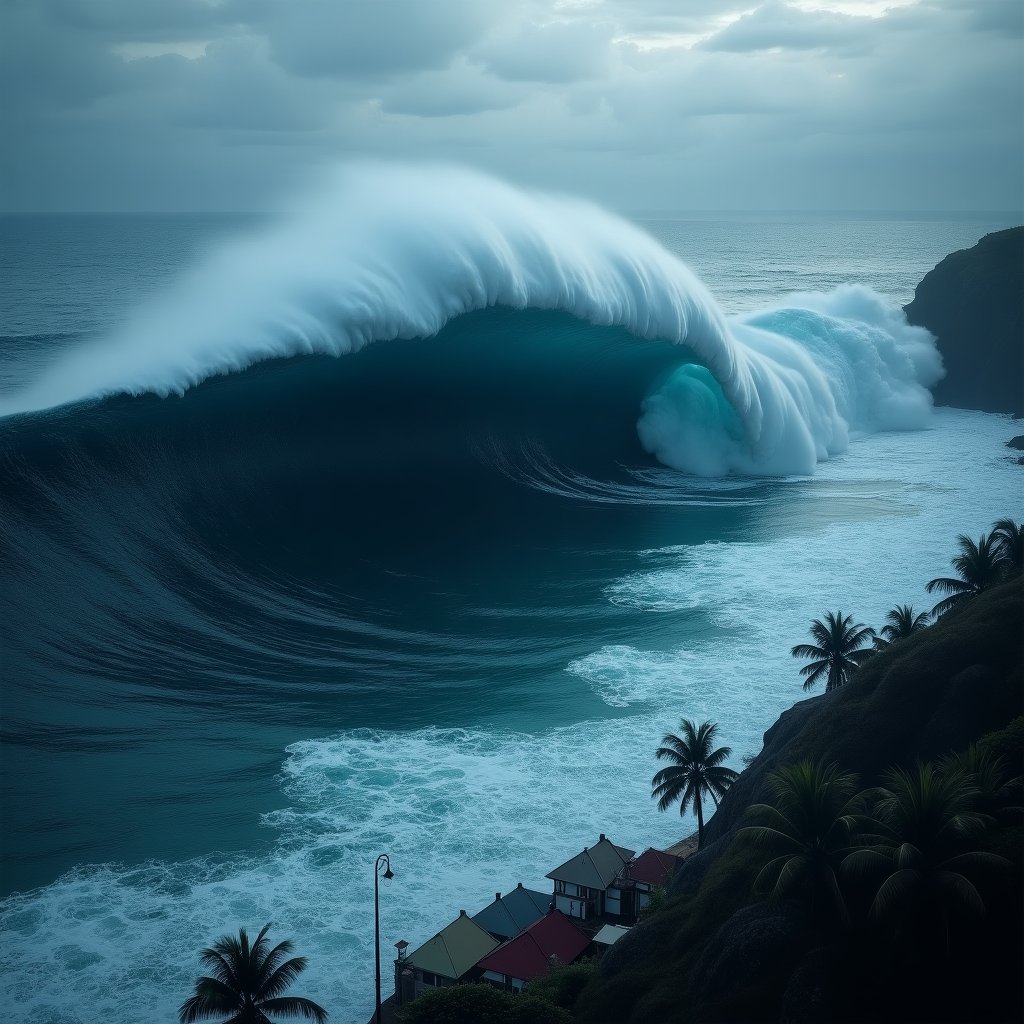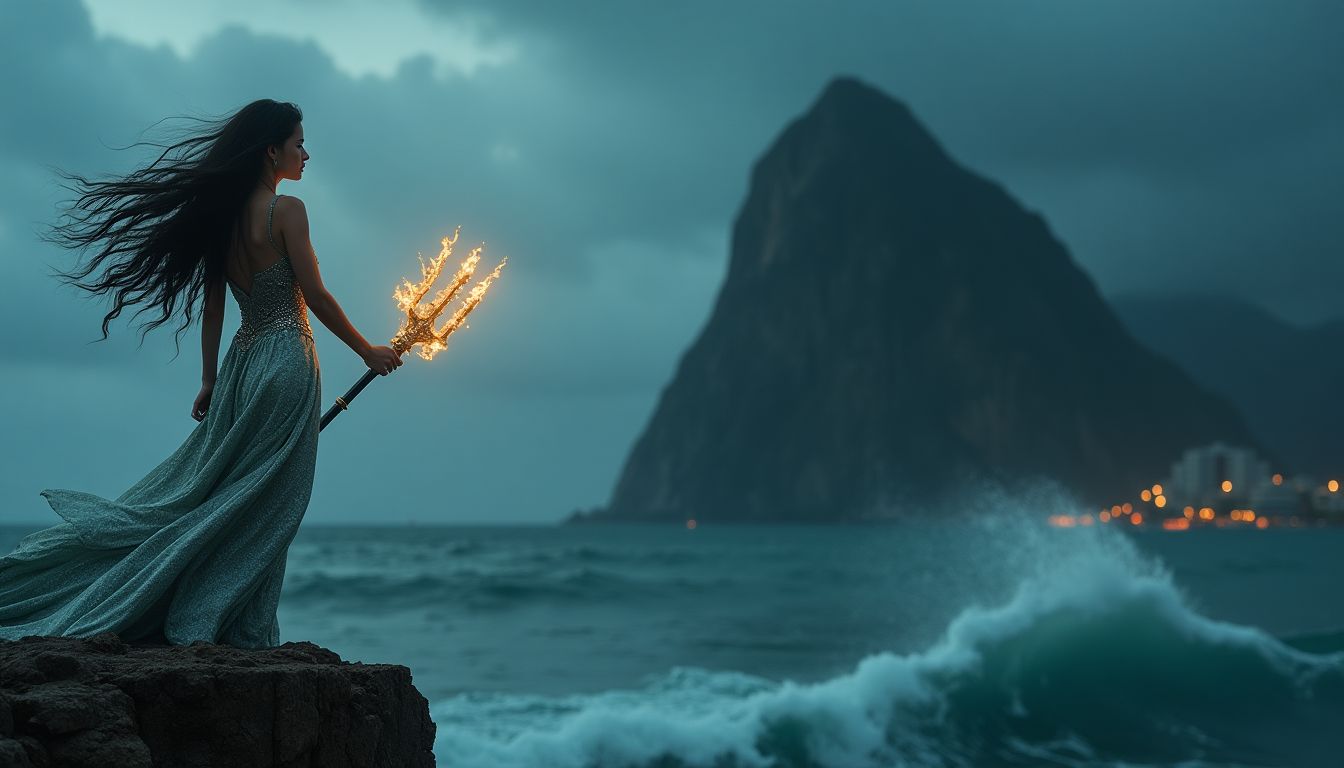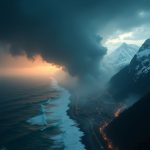Tsunamis, those colossal waves that can obliterate entire cities in mere minutes, might just be our planet's sneakiest, most lethal phenomena. Few imagined their might until catastrophe struck on December 26, 2004, claiming 230,000 lives with a single tsunami in the Indian Ocean. Filmed on mobile phones, images of this catastrophe were transmitted worldwide.
Fast forward seven years to 2011: a nuclear power plant in Fukushima, Japan, faced devastation after succumbing to yet another tsunami. These tragedies launched a race among scientists to enrich our understanding of these extraordinary waves. Saving lives hinges on this comprehension, as tsunamis can strike anywhere, leaving coastal developments—and in fact, all of us—vulnerable.
From Tragedy to Enlightenment: Exploring the Science of Tsunamis
On a fateful Friday—September 28, 2018—the Indonesian island of Sulawesi witnessed the wrath of a tsunami, claiming 4,000 souls and leaving 79,000 seeking refuge. How could humanity be caught off guard yet again? To unravel this mystery, UNESCO joined forces with local authorities, enlisting two tsunami specialists: Professor Costas Synolakis of the University of Southern California and Professor Hermann Fritz of the Georgia Institute of Technology.
The duo arrived in Sulawesi, akin to crime scene investigators piecing together evidence from a chilling crime scene. Here, the wasteland bore no secrets but instead gifted the investigators valuable clues. Lives relied on their detective-like powers to reconstruct the disaster's timeline, questioning why some perished while others lived to tell the tale.
Puzzle Pieces from the Bay of Palu
Costas Synolakis discovered mysteries in Wani, a small fishing town shielded from tsunamis—yet the phenomenon reached a height of five meters. Meanwhile, in Palu, Hermann Fritz faced tragic scenes: cellphone footage captured the disaster's dynamics as thousands perished. By creating a wave model that uncovered tsunamis' heights and spread, the scientists developed a blueprint for understanding the phenomenon.
However, even this intellectual exploration uncovers stark truths: coastal development heightens exposure, and tsunamis could strike anywhere on our planet. To wrap it all together in a metaphoric bow, these waves aren't simply watery giants. They’re the Earth's exhalations—nature's way of reminding us who's in charge.
The Birth and Fury of a Tsunami
The name "tsunami," now universal, originated from 17th-century Japan—fishermen returned to find their port demolished by those merciless waves. Imagine the Earth as a restless, jigsaw puzzle-piece-filled behemoth: tectonic plates rub and slide beneath one another until a mighty snap releases titanic energy—a poem of seismic shifts. This fragile dance births earthquakes, which in turn can release tongue-like waves extending far into lands, striking with unrivaled power.
December 26, 2004, marked a natural disaster wake-up call as a monumental 9.1 magnitude earthquake generated by unseen subterranean forces led to unprecedented waves measuring 35 meters—the world's introduction to a shocking reality.
Chroniclers of Time and Tsunami Secrets
In Banda Aceh, discoveries in a bat-colonized cave revealed a weaver’s tapestry of time, separating past tsunamis with layers of guano, or bat droppings. This geological chronicle offers insights from the last 10,000 years, underpinning the compelling truth that where a tsunami has visited, another looms on the horizon. With UNESCO’s worldwide tsunami map, scientists track more than 1,200 historic tsunamis.
The key message shouts from rooftops: vigilance must be ongoing. Though historical patterns emerge, predictability remains elusive—and the crowded Mediterranean, though considered safe, hides lessons we must learn again.
Are We Prepared: Science at the Frontline
Researchers from the GeoAzur Laboratory search for 1887's seismic fault off Nice's coast—a segment from the Riviera's unnoticed deadly history is revealed. The tale unfurls with three identified faults lying dormant beneath the waves. As Mediterranean beaches welcome thousands of unwitting tourists, time becomes a scarce and tenuous safety net. Scientists model potential devastations, with waves potentially surpassing 3 meters—a present-day reminder that history often repeats itself.
The region's best-devised tsunami warning system, CENALT, prepares for future perils with only 20 efficient minutes of evacuation time. Safe betting is off the table, though: nature's tsunami-speed prowess surpasses mere mortals' grasp.
The Conundrum of Safety: Bridging Knowledge Gaps
The 2018 Palu tsunami whispered a message of urgency. Despite efforts, no alert escaped Jakarta's Warning Centre because this wave overwhelmed expectations. Upon reviewing footage, Synolakis and colleagues realized: that a tsunami could arise internally—within Palu Bay’s recesses —perplexing an entire scientific community.
In Palu's case, a mere two minutes elapsed between the quake's shockwave ending and the tsunami’s initial grip tightening, upturning familiar tenets. The researchers revealed local landslides triggered dozens of mini-tsunamis that conspired to envelop the land with velocity. In unraveling their South-Eastern tale, Synolakis and Fritz cut familiar tropes of human control, unexpectedly reinvigorating their industry's interpretative landscape.
On the Frontlines of Future Tsunamis
Japan, a high-tech pioneer, is no stranger to tsunami scars. Yet, they anticipate the next seismic dance along the Nankai Trough—a formidable fault line measuring 900 kilometers. As advanced deployments register signs leading to an apocalypse-esque panorama, the DONET system tracks movements with Navy SEAL stealth, affording minutes precious for evacuation, coordinating all the moving parts towards possible salvation.
In the laboratories of Kyoto University and the University of Kobe, tsunami cataclysm simulations aim to harmonize evasive maneuvers like synchronizing a symphony, protecting formations against watery juggernauts. Artificial intelligence aids the orchestral proceedings, an unseen tuner guiding each note as vessels navigate disaster's waters.
The Endless Game of Tsunami Roulette
From control rooms to best-laid plans, we, the custodians of coastlines, are relegated to speculation and observation. Artificial walls, intricate technologies, and cutting-edge scientific conjectures cannot mask humanity's vulnerability. Despite gaining insights, false confidence poses a dangerous pitfall, ripest for complacency.
The message is crystal clear—nature's poetry comprises rapid tectonics, elusive forces and waves eternal. In our bustling autonomy, warnings demand notice, and rapid response remains critical. A testimony to preparedness, the world's tapestry offers estimates; but it's our instinctual nature—an unattended savior—which ensures survival and resilience.
As you absorb these tales of earth's power, consider your relationship with nature's ferocity. Are you ready to reevaluate assumptions, stay prepared, and participate in preserving our lived landscapes? Join us in the iNthacity community and share your thoughts. Become part of the discussion—and an unyielding force like nature itself within our "Shining City on the Web".
Sign up here to stay connected and informed. Invite your fellow nature enthusiasts to keep the discourse alive, foster shared comprehension, and shape tomorrow's preparedness.
Wait! There's more...check out our fascinating short story that continues the journey: The Siren of Atlantis
Disclaimer: This article may contain affiliate links. If you click on these links and make a purchase, we may receive a commission at no additional cost to you. Our recommendations and reviews are always independent and objective, aiming to provide you with the best information and resources.
Get Exclusive Stories, Photos, Art & Offers - Subscribe Today!

























1 comment